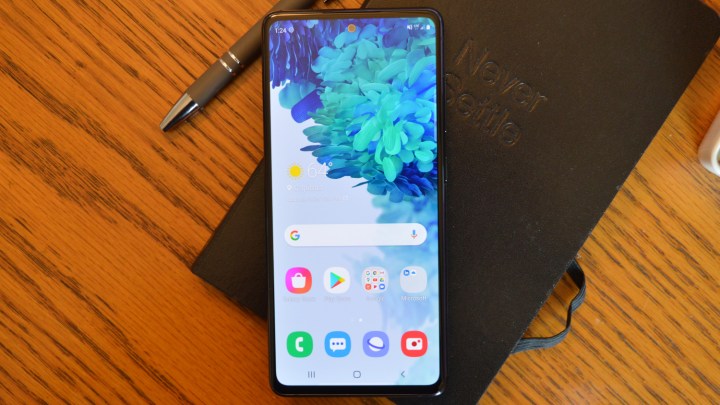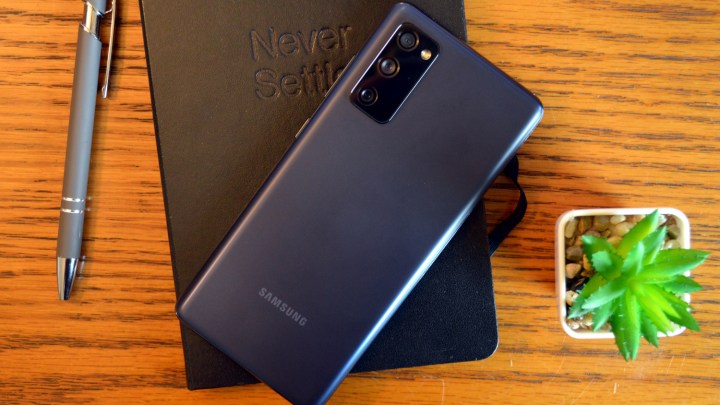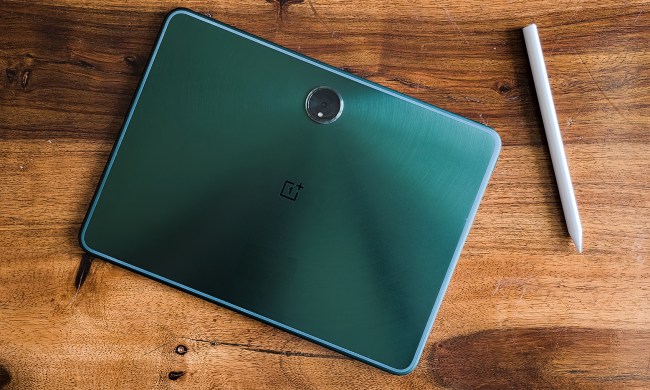The Samsung Galaxy S20 FE (Fan Edition) is Samsung’s way of improving on the minor flaws of March’s Galaxy S20 and making it more affordable. Priced at $699, it takes the basic design and specs of the S20 but adds a larger battery, a bigger screen, and a nicely redesigned rear-camera module. It’s one of the best Android smartphones you can buy right now for (just) under $700.
Needless to say, it’s not the only Android phone in this price range. Another good example is the OnePlus 8, which was released in April. It takes the same powerful processor used by the OnePlus 8 Pro and the same generous amount of RAM, and reducing the camera and display specs make its price tag more accessible. It’s another strong phone in the “Android phones under $700” category, but is it as good as the Galaxy S20 FE?
We answer this question by comparing the two smartphones in a head-to-head. We take a closer look at their specs, displays, designs, performance, battery, camera, and software, seeing how they measure up against each other. This should help you decide which phone checks all your boxes.
Specs
| Samsung Galaxy S20 FE | OnePlus 8 | |
| Size | 159.8 x 74.5 x 8.4mm (6.29 x 2.93 x 0.33 inches) | 160.2 x 72.9 x 8mm (6.31 x 2.87 x 0.31 inches) |
| Weight | 190 grams (6.70 ounces) | 180 grams (6.35 ounces) |
| Screen size | 6.5-inch Super AMOLED capacitive touchscreen (120Hz) | 6.55-inch AMOLED (90Hz) |
| Screen resolution | 2400 x 1080 pixels (407 pixels per inch) | 2400 x 1080 pixels (402 ppi) |
| Operating system | Android 10, One UI 2.5 | Android 10 (under OxygenOS) |
| Storage | 128GB, 256GB | 128GB, 256GB |
| MicroSD card slot | Yes | No |
| Tap-to-pay services | Samsung Pay, Google Pay | Google Pay |
| Processor | Exynos 990 (5G version: Qualcomm Snapdragon 865) | Qualcomm Snapdragon 865 |
| RAM | 6GB, 8GB | 8GB, 12GB |
| Camera | 12-megapixel wide, 8MP telephoto, 12MP ultrawide rear, 32MP front | 48MP wide-angle, 12MP ultrawide, 2MP macro rear, 16MP front |
| Video | 4K at 60 frames per second | 4K at 60 fps, 1080 at 340 fps |
| Bluetooth version | Bluetooth 5.0 | Bluetooth 5.1 |
| Ports | USB-C, 3.1 | USB-C, 3.1 |
| Fingerprint sensor | Yes, in-display | Yes, in-display |
| Water resistance | IP68 | No |
| Battery | 4,500mAh
Fast charging (25W) Fast wireless charging (15W) |
4,300mAh
Warp Charge fast charging (30W) |
| App marketplace | Google Play Store | Google Play Store |
| Network Support | AT&T, T-Mobile, Sprint, Verizon | Verizon, T-Mobile |
| Colors | Cloud Lavender, Cloud Mint, Cloud Navy, Cloud White, Cloud Red, Cloud Orange | Onyx Black, Glacial Green, Interstellar Glow, Polar Silver |
| Prices | $699+ | $699+ |
| Review score | 4 out of 5 stars | 3 out of 5 stars |
Design, display, and durability

It may feature the same edge-to-edge display and layout of buttons, but the Samsung Galaxy S20 FE’s design bears a few important differences from the original S20. Aside from a tidier camera module, it also comes with a “glasstic” body — aside from being a funny name, it’s a form of plastic designed to look and feel similar to glass. It is more attractive than plastic, but compared to the sleek Gorilla Glass of the OnePlus 8, it seems unrefined.
Beyond the glass body, the OnePlus 8 is more or less exactly the same size and shape as the Galaxy S20 FE. Its height, width, and depth are nearly identical, so both phones are equally comfortable to hold, even if the S20 FE is 10 grams (about 0.35 of an ounce) heavier.
The two devices are also evenly matched in terms of their displays. They both offer a resolution of 2400 x 1080 pixels, while the S20 FE sports a 6.5-inch screen while the OnePlus 8 packs a slightly larger 6.55-inch one. This means that Samsung’s phone has five more pixels per inch than OnePlus’ rival, but in practice, you won’t notice any difference. That said, the S20 FE is capable of a superior 120Hz refresh rate, giving users a smoother-looking screen.
It’s also worth noting the Galaxy S20 FE has an IP68 rating, while the OnePlus 8 has no water resistance. This means the S20 FE should cope better with immersion in shallow water and exposure to dust, while the OnePlus 8 may be left worse for wear.
This round is a tie: The OnePlus 8 looks better, but the higher refresh rate and IP68 rating swings things back towards the S20 FE.
Winner: Tie
Performance, battery life, and charging

Both the Samsung Galaxy S20 FE and the OnePlus 8 house the powerful Qualcomm Snapdragon 865 processor. This is one of the fastest chips you’ll find in Android phones this year, and it should handle most tasks and apps comfortably. That said, the OnePlus 8 has a bit of advantage here, since it ships with 8GB of RAM as standard, while the S20 FE has only 6GB. You may see a slight difference in how well the OnePlus phone multitasks and handles numerous apps open at once, but the difference shouldn’t be too big. The S20 FE also contains a microSD card slot, allowing you to expand its 128GB of internal memory. This isn’t something you can do with the OnePlus 8, which has no card slot.
The OnePlus 8 fares better with its battery. At 4,300mAh, it’s only 200mAh smaller than the S20 FE. However, our review found that the OnePlus easily lasts a full day even under heavy use, much like the S20 FE. Both phones are also capable of fast charging, although the OnePlus 8 supports fast charging at 30W, compared to 25W for the S20 FE.
This is a very close round. The OnePlus 8 has a little more RAM, but the S20 FE offers a MicroSD card slot. This round is a tie.
Winner: Tie
Cameras

The Samsung Galaxy S20 FE and OnePlus 8 are slightly stripped-down versions of more powerful cameras. The S20 FE features the same triple-lens setup you find on the original S20, but with an 8MP (rather than a 64MP) telephoto lens to go with its 12MP wide and ultrawide lenses. With the OnePlus 8, you find a 48MP wide lens, a 16MP ultrawide lens, and a 2MP macro camera.
It’s hard to directly compare these specs, but in practice, we’ve found that the Galaxy S20 FE takes better overall photos. The OnePlus 8 is a solid camera phone, taking good everyday photos with a nice balance of colors and tones. However, the S20 FE is just a bit more versatile and offers a little more quality, taking colorful photos in most situations and even taking decent photos in low light.
Both phones are more evenly matched when it comes to video, given that they can both capture 4K video at 60 fps. That said, the stronger performance overall means that the Samsung Galaxy S20 FE takes this round.
Winner: Samsung Galaxy S20 FE
Software and updates

Both phones run on Android 10, but with different skins of Google’s operating system. The Samsung Galaxy S20 FE uses One UI 2, which offers a nice, consistent design across all of its functions, as well as a high level of customization. The OnePlus 8 uses OxygenOS, which is somewhat more streamlined than One UI 2, offering a simpler, speedier interface and a minimum of distractions or complications. The question of which is better mostly depends on whether you prefer simplicity or articulateness.
Things are less subjective when it comes to updates. Samsung has a track record of slowly rolling out new updates, while OnePlus has a well-earned reputation of being faster. Because of this, we’re declaring this round as a narrow victory for the OnePlus 8.
Winner: OnePlus 8
Special features

Neither the Samsung Galaxy S20 FE nor the OnePlus 8 offer bags of special features. Even so, they do support 5G. This compatibility could be a big draw for anyone lucky enough to live in an area that is serviced by 5G signals.
The Galaxy S20 FE also supports a 120Hz refresh rate, another feature which still isn’t that common on many recent smartphones. It also supports wireless charging, which isn’t something that can be said for the OnePlus 8.
As for the OnePlus 8, its camera software offers few nice perks, such as Smart Pet Capture mode. Its Warp Charge is also faster than much of the competition, while its OxygenOS is possibly the best Android skins available right now.
None of these features are really showstoppers, so we’re calling this round a tie.
Winner: Tie
Price and availability
The Samsung Galaxy S20 FE starts at $699 and can be pre-ordered from Samsung. It will also be available from every major carrier and the vast majority of major retail outlets.
The OnePlus 8 also begins from $699 and is available to buy from OnePlus. It’s supported by all major carriers, although there have been reports of no support from AT&T for 5G.
Overall winner: Samsung Galaxy S20 FE

The Samsung Galaxy S20 FE wins this battle of the reasonably-priced Androids. It’s a close call, but with a more capable camera, support for a 120Hz refresh rate, and an IP68 rating, it just about has enough tricks up its sleeve to edge past the OnePlus 8.
However, it has to be said that this is a very slim victory, with the OnePlus 8 offering slightly better performance and an arguably better design. If you can find it cheaper than $700 anywhere, it may arguably be worth buying instead of Samsung’s phone.


